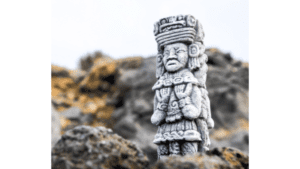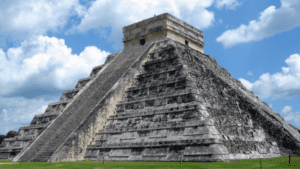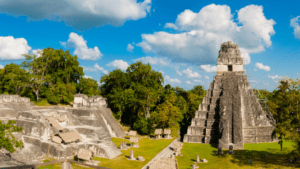
Introduction
When the Spaniards tried to colonize the New World and the Americas in the 16th century, they found the Maya, Aztec, and Inca civilizations there as living civilizations. Because of this, these three civilizations have become known to people all over the world. The history and overall identity of these three civilizations Aztec Mayan and Inca are briefly included here (1).
Social Structure of Aztec Mayan and Inca
1. Aztec Society
The Aztec civilization was a sprawling civilization that covered most of North America. They followed a social hierarchy in which individuals were identified as nobles, commoners, serfs, and slaves. The nobles included government and military leaders, high-ranking priests, and lords (2).
- Priests had their own internal caste system and were celibate and abstained from alcohol.
- Nobles were entitled to respect from commoners in society.
- The common class included farmers, artisans, merchants, and low-ranking priests.
- Serfs worked on lands that were owned by nobles and did not live in Calpuli.
- Slaves in this society were those who were guilty of crime or failed to pay tribute. Thus the social structure of this society was formed.
2. Mayan Society
The social classes in Mayan society were divided between nobles, commoners, serfs, and slaves. The Mayan civilization was based on many independent city-states. A city-state had a population of 25,000 or more. Social hierarchies existed in Mayan society.
- The highest class was the place of the nobles and the priestly class.
- Below them were the places of farmers, artisans, and traders.
- And below them was the place of the poor and propertyless (slaves) people.
They were at the bottom of society. Slaves had to do the hardest work in the Mayan kingdom. Each Mayan city-state had a ruler or king. The king was the supreme authority in social, religious, and war matters. Village headmen, priests, and prominent advisers were members of this advisory council. The noble class of the state is formed with the king and various levels of rulers-administrators (2) & (3).
3. Inca Society
Inca society was based on strict social classes. There are three types of social classes found in Inca society. These are noble classes, public administrators, and commoners. Few people had the opportunity to improve their social status. There was a rule in Inca society that once a person was born into a social class, they would remain there for the rest of their lives.
- The noble class included the Sapa Inca, villac umu, royal family, Inca, and Inca-by-privilege. The emperor or king of the Inca society was called Sapa Inca.
- The social class below the noble class was the public administrator and then the commoners.
Nobles were allowed to have many wives, but commoners could have only one wife. Girls were married at the age of twelve and men were married at the age of 20. Ayllu was the basic unit of Inca society.
Political Organization of Aztec Mayan and Inca
1. Aztec Empire
The Aztec empire was formed of city-states. At the center of each city-state was a large city that ruled the area. The government here was like a monarchy where an emperor or king was the primary ruler. They called their ruler Huey Tlatoani. The king was the ultimate force in the country. Empire built a series of city-states which is known as Altepetl. Each Altepetl was ruled by a supreme leader and a supreme judge and administrator. Cihuacoatl was second in command after the emperor. He was a member of the nobility. He served as the supreme judge for the court system, appointed all lower court judges, and managed the financial affairs of this empire
2. Mayan City-States
The Mayan civilization was ruled by kings and priests. They lived in independent city-states. These were linked together through trade, political alliances, and obligations of tribute. Some city-states were independent and others were a part of larger political hierarchies. These states were initially ruled by simple chiefs.
Each Mayan kingdom had a supreme military commander called a NACOM. Nacom worked for a three-year term. The primary job of Nacom was to formulate military strategy and call troops into battle. Independent states also had a high priest. He led a hierarchy of priests, fixed the dates of festivals, and predicted auspicious events for the ruler.
Their political structure was complex. The kings were powerful and claimed to be descended from gods and planets
3. Inca Empire
The political structure of the Inca Empire was complex and tightly controlled. Inca government was called the Tawantinsuyu. This empire was divided into four quarters. They are known as four suyus. The Inca Empire was a monarchy. This empire was ruled by one leader called sapa Inca. Some officers under the sapa Inca helped rule the empire. Below the sapa Inca was the viceroy. He worked as sapa Inca’s closest advisor. High priests, governors of a quarter, council of the realm, inspectors, military generals, and other officials were also present in the Inca Empire. There were two main taxes that the people here paid to the tax inspectors (2) & (3).
Religious Beliefs of Aztec Mayan and Inca
1. Aztec Religion

The Aztecs had many gods. But the chief deity of the Aztecs was Huitzilopochtli. Huitzilopochtli was the god of the sun and the war. The Aztecs were sun worshippers. Large pyramids were built in all the cities of the Aztec empire. At the top of the pyramid was the temple of the sun god. Human sacrifice was also prevalent in Aztec civilization. Another deity of the Aztecs was Quetzal Cohatl. He was the god of wind and sky. There was no human sacrifice provision for him (2) & (3).
2. Mayan Religion

Mayans worshiped the sun. There was always a stone altar in the Mayan temple at the top of the pyramid. People were sacrificed to the sun god on this altar. Apart from the sun, the Mayans worshiped many other gods. Religion was an integral and important part of the entire life of the Mayans. The religious consciousness of the Mayans governed their entire social activities. The Mayan polity was also controlled by priesthood and theocracy. Priests maintained complete control over the entire way of life of the Mayans (2).
3. Inca Religion
The religion of the Incas was similar to that of the ancient Egyptians. The main god of the Incas was the sun god Inti. In Inca society, the king was the representative of the sun god Inti. They believed that a god named Viracocha rose from the waters of Lake Titicaca and imparted life to the earth. So its water was sacred to them. The Incas believed in three worlds. Upper worlds, middle worlds, and lower worlds (2) & (3).
Architectural Achievements of Aztec Mayan and Inca
1. Aztec Architecture

The Aztecs built great pyramids and temples, metal objects, etc. The Aztecs mastered a form of writing. They used to write with the help of pictures. Art was inextricably linked to the activities of their lives. They used to build large stone statues of gods. The Aztecs used to write down various dates and historical dates on round stone discs. It is called panjika or calendar. They could make beautiful hats with feathers.
Aztecs could make beautiful colorful clothes and dresses by placing feathers on woolen cloth. They also could make beautifully designed pottery. The Aztecs did not acquire special skills in woodworking. They, however, used wood for building frames, and could also make wooden drums and a small type of chair.
2. Mayan Architecture

The Mayan showed absolute excellence in architecture and sculpture. A staircase was built on top of the pyramid to climb the temple. The entire pyramid was covered with a stone brick lining. Architects of the Mayan period generally used wood and stone tools.
Scholars believe that the Mayans did not use any metal tools because no metal tools have been found in any of the Mayan cities. Limestone was abundant in the Mayan kingdom. They made lime-grinding limestone. They used to cover the walls of these buildings with stone bricks. Various statues and images were carved to decorate temples and pyramids. They could weave beautifully designed clothes, make jade stone figurines, make pottery, and make beautiful gold and silver ornaments (2) & (3).
3. Inca Architecture

Inca architecture was pre-Columbian architecture in South America. There are three types of architecture. These are civil architecture (the 12-angle stone), military architecture, and religious architecture. The buildings were built in rectangular shapes. Stone and mud bricks were mainly used in this case. Inca buildings were arranged in three groups. They are called kancha. Some kancha would make a city block.
Another proof of the architecture of the Incas is their extraordinary rope bridge. The bridges were made of woven grass and were important to the road system (1).
Artistic Expressions of Aztec Mayan and Inca
1. Aztec Art
Aztec art was created primarily for religious purposes, as a way to honor the gods. They decorate the walls of their temples with carvings and make huge stone sculptures of their gods. They mainly worked with stone tools and woodworking tools. One of their most famous sculptures is the calendar stone, a disc depicting the sun god. They used other forms of art such as jewelry and feather works.
2. Mayan Art
The Mayans are famous for their stonework. The art of the Mayan civilization was influenced by their religion as well as other cultures such as the Olmec and Toltec. A popular form of their art was the stela. The Mayans painted murals on the walls of their building. Ceramics are also an important part of Mayan civilization. They decorated different pots with various types of designs and scenes. Mayans used stucco plaster to create large masks and portraits of both gods and kings (1) & (2).
3. Inca Art
The Incas were known for their art in pottery, textiles, and metalwork. They used very colorful designs. Mayans were expert weavers and used fine wool from llamas. They used feathers as a part of their clothing and used different designs on the clothes for special occasions.
Economic Systems and Agriculture
1. Aztec Economy and Agriculture
The economy of the Aztec empire was based on agriculture and trade. There are various types of fruits and vegetables grown in the agricultural land of the Aztec empire. These are tomatoes, pumpkins, beans, etc. Lacking space on the islands of Lake Texcoco, the Aztecs filled in the shallows of the lake. Rectangular farms or kinappa were built by collecting soil from the banks and mud from the lake bed. People here used intensive agriculture methods (1) & (2).
2. Mayan Economy and Agriculture
Subsistence agricultural methods were used in Mayan civilization. The economic condition was based on the trade of staple crops. There are different types of crops grown here. These are corn, beans, pumpkin, etc. Agriculture was one of the main economic bases of the Mayans. They gradually prospered economically through this agricultural work (1) & (2).
3. Inca Economy and Agriculture
The Inca civilization established an economic structure that allowed for substantial agricultural production as well as intra-community exchange of goods. They had a strong organized economy. The economic structure was controlled by a chief called a kuruka. The government controlled the economy and maintained trade. Their economic conditions were based on land. The Inca Empire was dominated by an extensive agricultural system. Maize cultivation is high in the Inca Empire.
Science, Technology, and Engineering
1. Aztec Science, Technology, and Engineering
They were very advanced in science and mathematics. Aztec science relied heavily on mathematics such as the design of their calendars. The Aztec counting system was based on 20. They also mastered the numeral system. They used to write from 1 to 19 by arranging dots one after the other. The Aztecs practiced astronomy. They counted months in 20 days and 18 such months made up the year (2).
2. Mayan Science, Technology, and Engineering
The Mayans are much focused on astronomical practices and timing for their religious festivals and agricultural needs. They kept two types of years. One was the holy year. It was 260 days. Another was the common reckoning year- in which the year was counted in 360 days and leap days were added to it. The Mayans knew the writing system and the number system. In the early stages of the Maya civilization, they only wrote on stones, tables, and clay pots (1).
3. Inca Science, Technology, and Engineering
Astrological knowledge of the Incas was insignificant compared to that of the Mayan and Aztecs. They used one word to measure length and area- topo. 1 topo was 4 miles long. A major form of medicine used by the Incas was the coca leaf. They built aqueducts to bring fresh water to the city. They had their own calendar, where a year had 12 months, a month had three weeks and a week had ten days. The science and technology of the Incan empire developed over time (2).
Legacy and Cultural Impact of Aztec Mayan and Inca
1. Aztec Legacy and Cultural Impact
The Aztecs had a great influence on the development of Mexican culture. Their language, Nahuatl, is still spoken in various regions of Mexico and many festivals celebrating the country come from the Aztec empire (1) & (2).
2. Mayan Legacy and Cultural Impact
In Mayan society, only priests could write and read hieroglyphic characters. A type of ball game was prevalent in the Mayan kingdom. This ball game was an important religious ceremony in Mayan society. The game gradually became popular in the region of Mexico and later among the Aztecs. Mayan used to build and carve idols of gods or animals and animals related to gods and goddesses to decorate their pyramids, palaces, etc.
Mayan could draw beautiful pictures. They could paint the idols and walls beautifully. Books or manuscripts had pictures. The Mayans used to inscribe various details and dates on the square stone pillars and plaques (1) & (2).
3. Inca Legacy and Cultural Impact
There was great progress and development in areas such as building terraces and irrigation canals to master architecture, road construction, and agriculture. They also developed sophisticated calendars.
